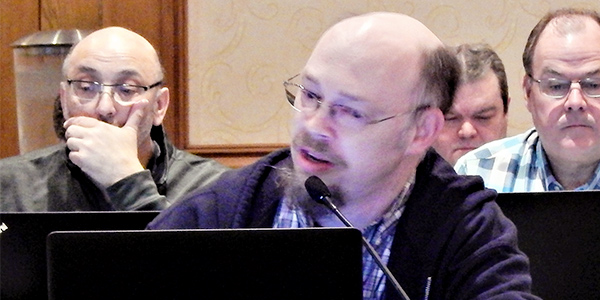By Amanda Durish Cook
Utility regulators in MISO and SPP states are looking to better define their inquiry into the RTOs’ inability to develop interregional projects intended to relieve costly congestion across their seams despite repeated attempts to do so.
The effort between the Organization of MISO States (OMS) and SPP’s Regional State Committee (RSC) arose last year after the groups decided to perform their own analysis of seams coordination issues, supplementing work already underway by the RTOs’ two market monitors. (See MISO, SPP States Ponder Look at Interregional Planning.)
Speaking during a Jan. 13 conference call of the OMS-RSC Seams Liaison Committee, Missouri Public Service Commission Economist Adam McKinnie laid out two options for the effort: to either re-examine the RTOs’ past analyses of proposed interregional projects or embark on a series of smaller studies on congested flowgates that could produce entirely new project proposals.
McKinnie said the liaison committee could begin pursuing either option by identifying MISO-SPP flowgates with the highest market-to-market payments over the past three years.
From there, the committee could either elect to re-examine the value of projects considered but not approved in the 2017, 2018 and 2019 coordinated system plans (CSPs), or OMS and SPP could undertake their own series of “quick-hit” studies on the most expensive flowgates and produce some new project proposals for the RTOs, including some smaller projects that might resemble PJM and MISO’s Targeted Market Efficiency Projects.
“It would require a lot of stakeholder effort,” McKinnie warned of the latter proposal, adding that it would be on stakeholders to propose project solutions.
Kansas Corporation Commissioner Shari Feist Albrecht asked if the study options might duplicate work that MISO and SPP may already have planned.
McKinnie said the RTOs have scheduled an annual review of seams issues during a March 10 Interregional Planning Stakeholder Advisory Committee meeting, where they will collect ideas on target areas for this year’s CSP. OMS and RSC members will know more then, he said.
“Some of the work we might be asking the staffs of MISO and SPP to do,” McKinnie said of the possible studies. He said he would get a work estimate from MISO and SPP to examine past CSPs.
North Dakota Public Service Commissioner Julie Fedorchak suggested that MISO and SPP regulators could blend the two approaches by first reviewing past projects identified in CSPs, then deciding whether to branch out to explore new projects.
McKinnie said OMS and the RSC could discuss options through February and vote on a direction sometime in early spring.
The OMS-RSC will meet next in D.C. during the Feb. 9-12 NARUC Winter Policy Summit.
For that meeting, McKinnie said both MISO and SPP staff members have expressed a “readiness and willingness” to give presentations to the regulators on how they coordinate reliability across seams in both real-time and in transmission planning.





